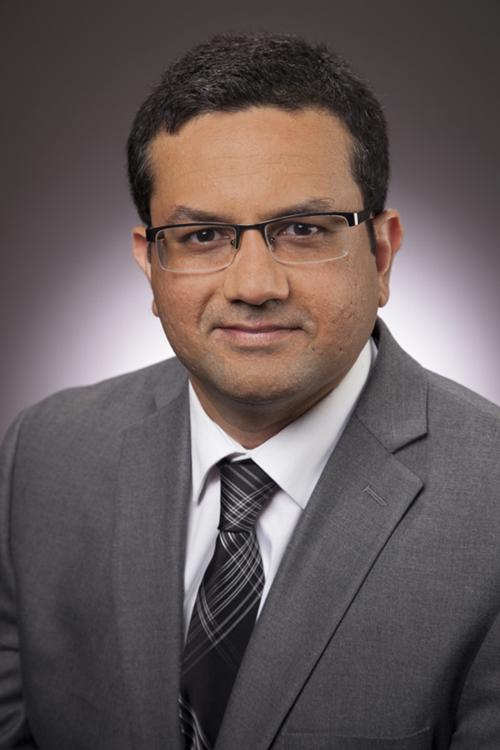Day-to-day, most of us don’t think much about the arteries in our neck, but they actually play a big role in keeping our brains healthy. These blood vessels, called carotid arteries, carry fresh, oxygen-rich blood away from your heart, straight to your head and brain.
When one of those arteries becomes narrowed or blocked, it can slow down or stop that essential blood flow. That’s when serious problems, like a stroke, can happen.
Let’s break down what causes a blocked carotid artery, how to spot the warning signs, and what doctors can do to help.
What is carotid artery disease?
Carotid artery disease happens when plaque builds up inside the artery walls. Plaque is made of fat, cholesterol and other substances that stick to the inside of your blood vessels over time. The plaque build-up can cause the carotid arteries to become stiff and narrow, a disease known as atherosclerosis.
As more plaque builds up, the arteries get narrower and harder and blood can’t flow as easily —kind of like water trying to flow through a clogged pipe. If the artery gets too narrow or blocked, not enough blood and oxygen can reach the brain. When the brain doesn’t get the oxygen it needs, brain cells can die. This is what causes a stroke.
What causes a blocked carotid artery?
A blocked carotid artery doesn’t happen overnight. It usually builds up over years due to things like:
- High blood pressure: When your blood pressure is too high, your artery walls experience extra force. Over time, this force can damage the lining of your arteries. This damaged lining allows cholesterol and other substances to penetrate the artery wall and for plaque buildup to begin.
- High cholesterol: Cholesterol is a fatty substance that your body needs for essential functions, but too much of the “bad” kind (LDL) can lead to the formation of plaque deposits in your arteries. When it collects on the artery walls, it narrows the space for blood to flow.
- Diabetes: If you have diabetes, your body has trouble managing blood sugar levels. High blood sugar can damage blood vessels and increase your chances of developing atherosclerosis.
- Smoking: Smoking damages your blood vessels and triggers an inflammatory response that aides in the production of plaque in your arteries. It also lowers your “good” cholesterol, which is responsible for helping remove plaque from your arteries.
- Being overweight and inactive: Carrying extra weight or not getting enough exercise can raise your risk of several problems, such as high blood pressure, high cholesterol and diabetes. All of these can contribute to blocked arteries.
- Poor diet: Diets high in saturated fats, trans fats, sugar and salt can raise your cholesterol and blood pressure, which can increase the risk of building up plaque in your arteries.
- A family history of heart disease: If heart disease, stroke or high cholesterol run in your family, you may be at higher risk, even if you live a healthy lifestyle. It’s a good idea to share your family history with your doctor so they can monitor you more closely.
As we get older, plaque is more likely to build up, especially if we ignore or don’t manage these risk factors.
What are the symptoms of carotid artery disease?
Here’s the tricky part: Many people with carotid artery disease don’t have any symptoms until something serious happens, like a transient ischemic attack (TIA), also known as a mini-stroke.
But some people may experience warning signs, such as:
- Sudden numbness or weakness, especially on one side of the body
- Trouble speaking or understanding speech
- Blurred or sudden vision loss in one or both eyes
- Dizziness or loss of balance
- A sudden, severe headache with no clear cause
If you or someone around you shows these symptoms, call 911 right away. Fast treatment can make a huge difference.
How do doctors diagnose it?
If your doctor suspects a blockage, they will start with a physical exam. They may listen to your neck with a stethoscope to check for a bruit, a distinct blowing or swooshing sound that may indicate a turbulent flow of blood as it goes through a narrowed or irregular artery.
They may also recommend tests, such as:
- Carotid ultrasound: a quick, painless test that uses sound waves to see how well blood is flowing
- CT angiography (CTA) or MR angiography (MRA): imaging scans that give a detailed picture of your arteries
- Carotid angiogram: an X-ray that uses dye to show blood flow more clearly
These tests help your care team decide what kind of treatment is right for you.
What can be done about it?
The good news is there are ways to treat carotid artery disease — and even prevent it from getting worse.
1. Lifestyle Changes + Medication
If the blockage is small (less than 50%), your doctor may suggest starting with:
- A heart-healthy diet
- Quitting smoking
- Getting regular exercise
- Managing conditions such as diabetes or high blood pressure
- Medications to lower cholesterol and prevent blood clots
These steps help slow down the plaque buildup and reduce stroke risk.
2. Carotid Endarterectomy
If the artery is badly blocked (usually over 70%), your doctor may recommend carotid endarterectomy — a surgery to remove the plaque and restore blood flow.
3. Carotid Artery Stenting
If surgery isn’t a good option, your doctor might place a stent — a tiny mesh tube — to hold the artery open. This is a minimally invasive procedure done through a small incision, often in the groin.
4. Transcarotid Artery Revascularization (TCAR)
This innovative minimally invasive procedure involves accessing the carotid artery through a small incision in the neck. It is particularly helpful for high-risk patients, such as people of advanced age and those with other health conditions.
What happens if you don’t treat it?
Leaving a blocked carotid artery untreated can lead to:
- Stroke, which can cause long-term disability or death
- Mini-strokes (TIAs), which are warning signs of a bigger stroke ahead
- Memory problems or trouble concentrating, caused by poor blood flow to the brain
This is why early detection and treatment is important.
Final thoughts
A blocked carotid artery is a serious condition — but it can be managed with the right care. If you have risk factors such as high blood pressure, high cholesterol or diabetes, don’t wait to talk to your doctor.
Are you curious about your risk? The vascular specialists of Northeast Georgia Physicians Group (NGPG) Vascular Center, an integral part of Georgia Heart Institute, are here to help you understand your options and protect your health for years to come.
Niraj Parikh, MD, is a vascular surgeon with NGPG Vascular Center.



